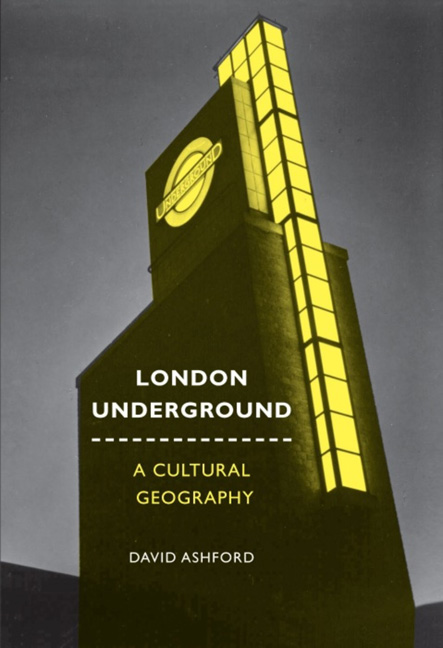Book contents
- Frontmatter
- Dedication
- Contents
- Acknowledgements
- Notes on Convention
- List of Illustrations
- The Book of the Machine: A User's Guide
- 1 Psychopathology of Modern Space
- 2 The Lord of the Dynamos
- 3 Blueprints for Babylon
- 4 Making a Home in Modernity
- 5 Christmas in Hell
- 6 Insurrection in Alphabet-City
- 7 The Ghost in the Machine
- Index
- Platesection
7 - The Ghost in the Machine
- Frontmatter
- Dedication
- Contents
- Acknowledgements
- Notes on Convention
- List of Illustrations
- The Book of the Machine: A User's Guide
- 1 Psychopathology of Modern Space
- 2 The Lord of the Dynamos
- 3 Blueprints for Babylon
- 4 Making a Home in Modernity
- 5 Christmas in Hell
- 6 Insurrection in Alphabet-City
- 7 The Ghost in the Machine
- Index
- Platesection
Summary
At every Underground stop, people climb to the surface, emerge into the light of day, but the train goes on, the circulation continues, the Circle Line providing a visual and conceptual magnet for the way the city stays alive by pumping flows of energy around the system. At the end of the line this fiction dissolves; it is not only people but the place itself that releases its grip on the idea of the city as a closed system.
(Rod Mengham, ‘End of the Line’, 2003)Turning away from the rationalisation of time and space represented by the Tube Map, Rod Mengham and photographer Marc Atkins set out to chart the region where this pattern most obviously unravels. In their photo-essay ‘The End of the Line’, termini on the Central, District, Metropolitan and Jubilee are shown to burrow into other organisations of space, or even into entirely different times, ‘portals into something other than the idea of the city we automatically link them with’. At the western extremity, Uxbridge is entombed in a future remembered by all who were teenagers in the 1960s. Stanmore is paralysed at a fixed point in the history of the Underground's development: ‘Passengers climbing up and down the hill traverse the strata of transport archaeology, with the prehistory of railway heritage’. And in Richmond, there is a peculiar overgrown patch of ground between the buffers and the end of the track: ‘This small deposit of neglect, with its little pockets of chalk and the different-sized gravels, has accumulated indifference at specific moments of alteration and redefinition: it is a transport midden, a municipal burnt mound; by-product of energies that were focused elsewhere’. Mengham concludes that this overlapping of materials, constantly revised by the superimposing of new layers, provides an even better insight into the historical process than the more striking anachronisms at Uxbridge and Morden: ‘the evidence of powerplay is not enshrined in the canonical details of a metal-framed clerestory, or an abstracted Egyptian façade; it is preserved in a pile of detritus’.
This emphasis on the marginal aspects of a place is a feature of psycho-geography.
- Type
- Chapter
- Information
- London UndergroundA Cultural Geography, pp. 167 - 184Publisher: Liverpool University PressPrint publication year: 2013



